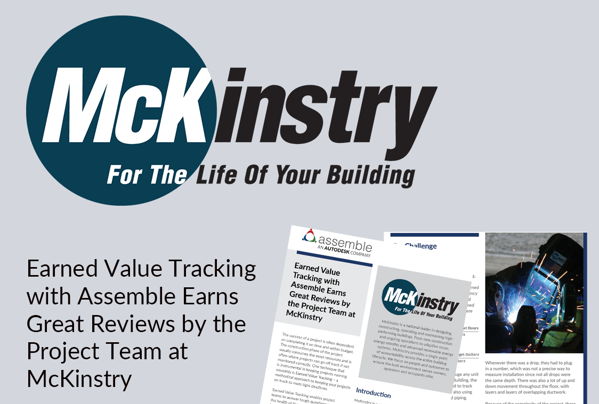One technique that is instrumental in keeping projects running smoothly is Earned Value Tracking – a methodical approach to keeping your projects on track to meet tight deadlines.
Earned Value Tracking enables project teams to answer tough questions regarding the health of the project and schedule. It has become the standard method in the construction industry to measure a project’s progress at any given point in time, forecast its completion date and final cost, and analyze variances in the schedule and budget as the project proceeds. Earned Value Tracking is a snapshot in time of what is complete relative to the total scope of work.
Introduction:
McKinstry is a national leader in designing, constructing, operating, and maintaining high-performing buildings. Founded in 1960, the company has over 2,100+ employees, including 165+ licensed project engineers. McKinstry is headquartered in Seattle, with 21 office locations nationwide. From new construction and ongoing operations to adaptive reuse, energy retrofits, and advanced renewable energy systems, McKinstry provides a single point of accountability across the entire building lifecycle.
The Challenge:
The Seattle Life Science Building was a 13-story project comprised of 345,000+ sq. ft of office and lab space. One lab floor had 47 tons of ductwork and 5.5 miles of piping, so tracking the installed progress was a cumbersome task. McKinstry used the Earned Value Tracking method to track the efficiency and health of the project from a labor and budget standpoint.
“I can sort and filter the data from Assemble by installation status and activity Ids in a matter of seconds to see quantities installed. With the manual takeoff methods, it would take hours and when we would go back and double-check, the numbers would come out different every time. With Assemble, now we have extreme confidence in the number we are reporting.”
Spencer Hobson
McKinstry
“If you are familiar with pivot tables in Excel, try to visualize Assemble as a pivot table in the 3D environment, it allows you to slice and dice the information however you want and there is so much flexibility, and unlimited use cases.”
CJ Best
McKinstry
Read the Full BIM case study to learn more!

